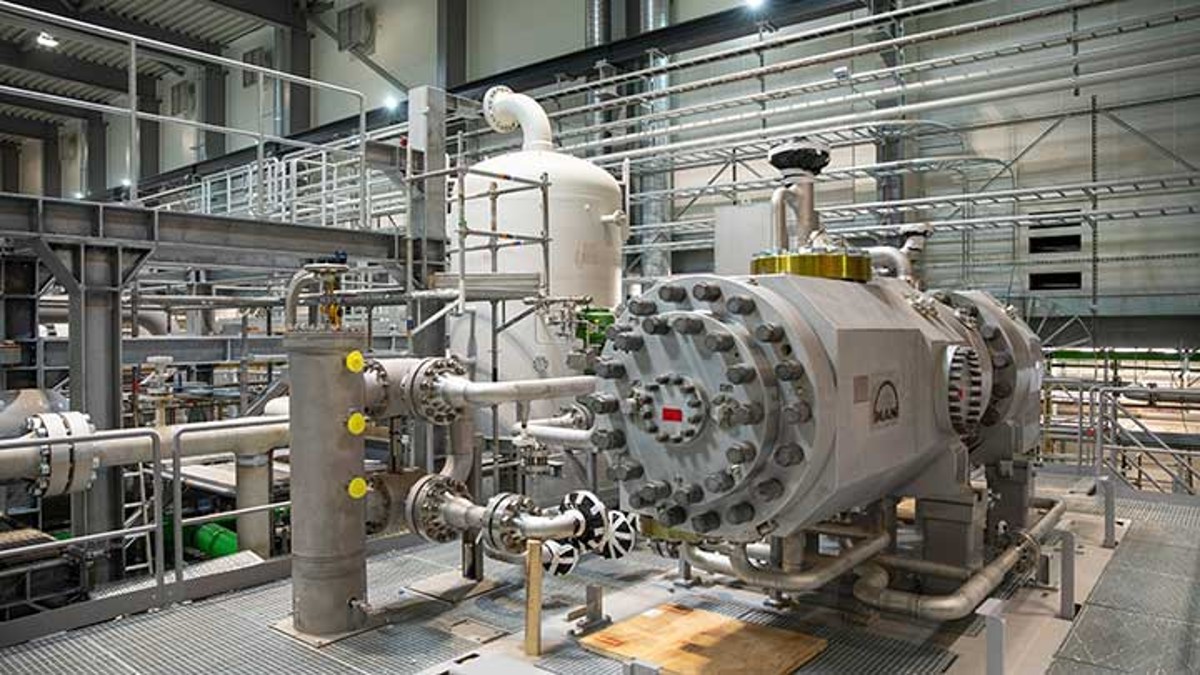
German engine maker MAN Energy Solutions‘ industrial-sized heat pumps will produce 350,000 MWh of heat per year and warm 25,000 Danish households using offshore wind power and seawater.
Industrial-sized heat pumps
The seaport town of Esbjerg, Denmark, has a target of net zero by 2030, and Kenneth Jørgensen, project director at Danish utility DIN Forsyning, said:
We’re phasing out coal-fired heat and replacing it with carbon-neutral district heating produced from wind and seawater.
DIN Forsyning will be using two of MAN Energy’s electro-thermal energy storage heat pumps. They’re the first of their kind to provide zero-emission thermal energy on an industrial scale, and they’re powered by clean electricity created by local wind turbines. They’re expected to come online this fall.
How they work
Seawater is drawn from the harbor, and thermal energy is extracted before the water is pumped back into the sea. Carbon dioxide, the refrigerant, is warmed up by the seawater and vaporized, then it’s compressed, and it heads to a heat exchanger, where it reaches a maximum temperature of 150 C (302 F). It will deliver water to the city’s district heating network at 90 C (194 F).
Karl Böhle, MAN’s senior project manager, said:
The specialty of the system we’re installing is that we’re using seawater as a heat source, CO2 as a refrigerant, and a hermetically sealed, electrically-driven compressor to generate heat.
One of the unique features of this heat pump solution is that its use of excessive wind power can balance the grid if required.
Being able to store heat means that, unlike an electrical grid that has to be balanced, the heat pump’s production does not have to match its consumption. Excess electricity can be sold back to the grid, which means the giant heat pumps provide cleaner and cheaper heat and electricity.
Top comment by Aigars Mahinovs
The big part here is not even the heat pump, but just having district heating at all. It enables easy management of very efficient heating systems at massive scales and allows having multiple heat sources (biogas from organic waste, wood pellets from sawdust, heat pump, geotermal, waste heat from industrial processes, ...) and operate them flexibly as needed. In the individual homes there is typically a variable heat exchanger and an energy meter that measures temperature delta and water flow to determine real energy consumption of your home and that then feeds heating surfaces in the rooms.
Check out the video below to learn more about this trailblazing project:
Read more: World’s most powerful wind turbine’s blades arrive for installation
Photos: Sebastian Vollmert
UnderstandSolar is a free service that links you to top-rated solar installers in your region for personalized solar estimates. Tesla now offers price matching, so it’s important to shop for the best quotes. Click here to learn more and get your quotes. — *ad.
FTC: We use income earning auto affiliate links. More.



Comments